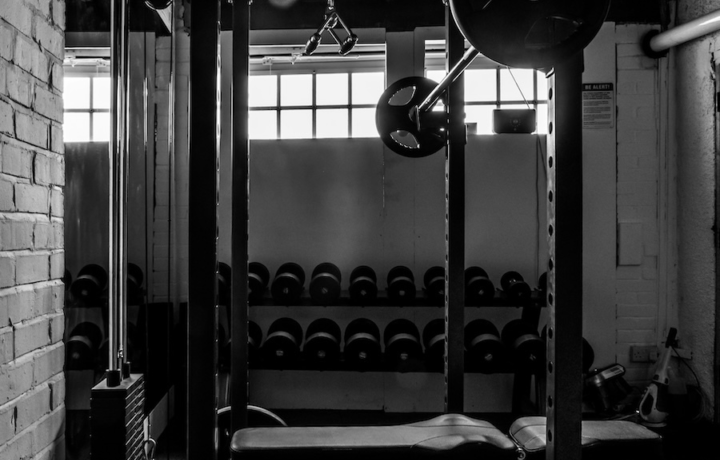Exercise
Lever Seated Dip

Lever Seated Dip
How to Perform
- Adjust the seat height so your arms are fully extended when gripping the parallel handles, and place your feet flat on the platform or floor.
- Sit upright with shoulders pulled back, gripping the handles with a neutral grip (palms facing each other) and elbows fully extended.
- Inhale and slowly bend your elbows to lower your body, keeping your torso as vertical as possible while maintaining contact between your back and the backrest.
- Control the descent until your elbows reach approximately 90 degrees, ensuring your shoulders remain down and away from your ears.
- Pause briefly at the bottom position while maintaining tension in your triceps and chest.
- Exhale forcefully as you press through your palms to straighten your elbows and return to the starting position.
- Focus on pushing through your triceps rather than using momentum, keeping your wrists neutral and aligned with your forearms throughout the movement.
- At the top position, fully extend your elbows without locking them out, maintaining tension in your triceps before beginning the next repetition.
Important information
- Keep your chest up and shoulders down throughout the exercise to prevent unnecessary strain on your shoulder joints.
- Avoid leaning forward during the movement as this shifts emphasis away from the triceps and can strain your shoulders.
- If you experience wrist discomfort, try adjusting your grip or using wrist wraps for additional support.
- Start with lighter weight to master proper form before progressing to heavier loads.

Lever Seated Dip
Exercise Details
Primary Muscles
Muscle Groups
Mechanic
Risk Areas
Built for progress
Take the guesswork out of training
Create personalized AI-powered workout plans that evolve with you. Train smarter, track every rep and keep moving forward, one workout at a time.






The Lever Seated Dip stands as a powerful compound movement in any serious bodybuilder's arsenal, targeting both the pecs and triceps with remarkable efficiency. This intermediate-level exercise has earned its reputation in bodybuilding circles for its ability to build impressive upper body strength while adding noticeable mass to the chest and arms.
When incorporated into a structured strength training program, the Lever Seated Dip offers a mechanical advantage that traditional bodyweight dips might not provide. The machine's design allows for precise resistance control, making it particularly valuable for those looking to push beyond plateaus in their chest and tricep development. Many seasoned lifters appreciate how this movement effectively isolates the targeted muscle groups while reducing stress on the shoulder joints compared to its free-weight counterparts.
For intermediate lifters focused on hypertrophy, the Lever Seated Dip delivers exceptional muscle fiber recruitment across the pectoralis major and all three heads of the triceps. This comprehensive stimulation explains why it's become a staple in bodybuilding routines aimed at developing that coveted thick, powerful upper body appearance. The exercise's biomechanics create a unique stretching tension at the bottom position, which research suggests may enhance muscle growth potential when performed with proper form and appropriate loading.
Strength athletes also benefit substantially from this movement, as it builds pressing power that transfers well to other lifts like bench press variations. The stabilization required throughout the motion additionally enhances overall upper body coordination and muscular control. Many powerlifters incorporate this exercise as an accessory movement to strengthen potential weak points in their pressing chain.
When programmed intelligently within a well-designed training split, the Lever Seated Dip can significantly contribute to both aesthetic development and functional strength gains, making it a versatile option for those with intermediate experience looking to advance their physique and performance goals.
FAQ - Lever Seated Dip
The Lever Seated Dip primarily targets the triceps (all three heads) and pectoralis major (chest). Secondary muscles engaged include the anterior deltoids (front shoulders) and serratus anterior, making it an effective compound movement for upper body development.
Sit with your back against the pad, grasp the handles with a firm grip, and keep your elbows tucked at roughly a 45-degree angle to your torso. Lower yourself by bending at the elbows until you feel a stretch in your chest, then press back up to the starting position by fully extending your arms without locking out your elbows.
The Lever Seated Dip offers more controlled resistance and reduced shoulder stress compared to traditional dips. The fixed movement pattern makes it more accessible for intermediate lifters, while the machine's design allows for precise weight selection that can be particularly beneficial for progressive overload and hypertrophy training.
The most common mistakes include flaring the elbows too wide (which stresses the shoulders), using excessive weight (compromising form), and failing to achieve a full range of motion. Also avoid bouncing at the bottom of the movement or locking out your elbows at the top, as these can lead to joint strain and reduced muscle activation.
For optimal results, incorporate Lever Seated Dips 1-2 times weekly as part of your chest or triceps training day. Allow 48-72 hours of recovery between sessions targeting these muscle groups, and adjust the volume based on your experience level—typically 3-4 sets of 8-12 repetitions works well for hypertrophy goals.







